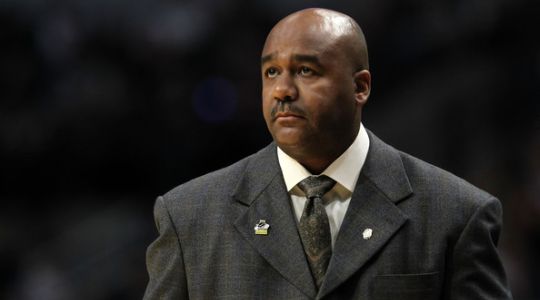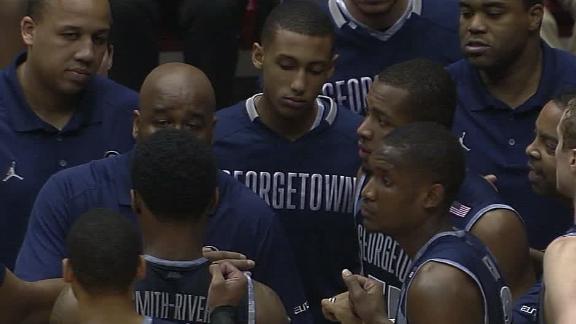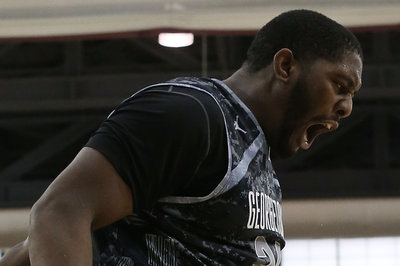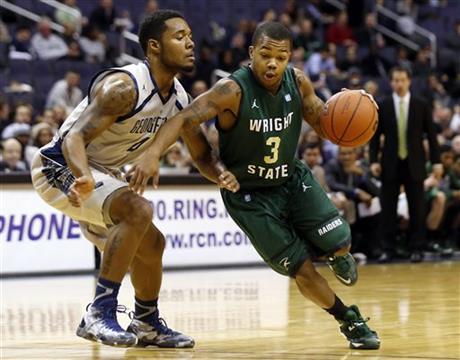Georgetown in Bad Shape Without Joshua Smith
Posted by Alex Moscoso (@AlexPMoscoso) on January 22nd, 2014Back in December, I wrote how Joshua Smith’s inability to play full starter minutes is an opportunity cost to Georgetown. Now a month later, John Thompson III and the rest of his staff are just wishing they could get those partial minutes back from their big man. The junior center has missed the last five games due to academic issues, which has — in addition to the indefinite loss of Jabril Trawick (broken jaw) — caused the Hoyas to go 1-4 in Big East play including Monday night’s 80-72 overtime loss to Marquette. Without Smith available, Markel Starks and D’Vauntes Smith-Rivera are the only viable scoring options for the Hoyas and teams have adjusted by clamping down on both players. To their credit, each has stepped up his efforts by scoring more than half of the team’s points in nearly full-time minutes during this five-game stretch. But it is this over-reliance that has caused Georgetown to give up leads at the end of games and why the Hoyas find themselves in their current troublesome state.
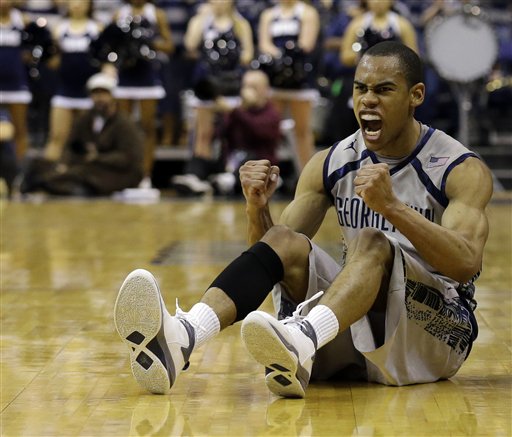
Markel Starks scored a career-high 28 points in a losing effort to Marquette. (AP Photo/Alex Brandon)
First, let’s look at the impact Smith’s absence has had on the Hoyas. Basketball numbers man Dan Hanner has an article at realgm.com where he splits the advanced metrics of team performance for Georgetown both with and without Smith. (note: these numbers do not take into account Georgetown’s game against Marquette). The numbers are staggering. The team’s Pythagorean Winning Percentage went from 0.899 with Smith to 0.435 without him — in other words, given a middle-of-the-road schedule, the Hoyas with Smith in the lineup would win around 90 percent of their games, while the same schedule played without Smith would win only 44 percent of their games. In my previous post examining Smith’s impact, I believed his contribution was more significant on offense rather than defense. What Hanner’s analysis shows is that the Hoyas have felt the sting of his loss on both ends of the court. Without him, the offense scores 11.4 fewer points per 100 possessions and the defense allows 10.5 more points per 100 possessions. As a result, the Hoyas face a structural deficit where they are allowing 2.3 points per 100 possessions more than they are scoring. Before Smith’s benching, this difference was an offensive advantage of 19.6 points per 100 possessions (a 21.9-point swing). What Hanner’s analysis shows is that the loss of Smith has had a much bigger impact on the outcomes of the Hoyas than I previously thought it would.






























